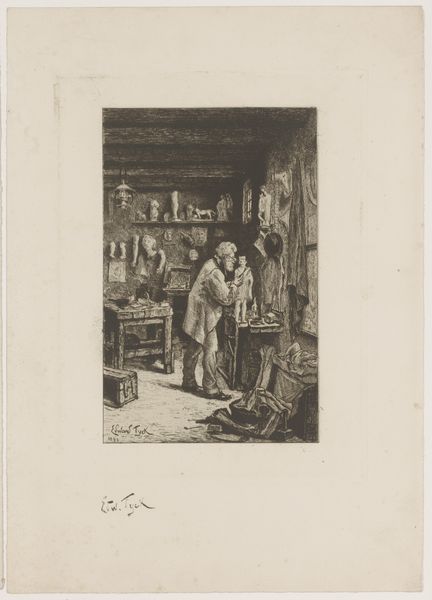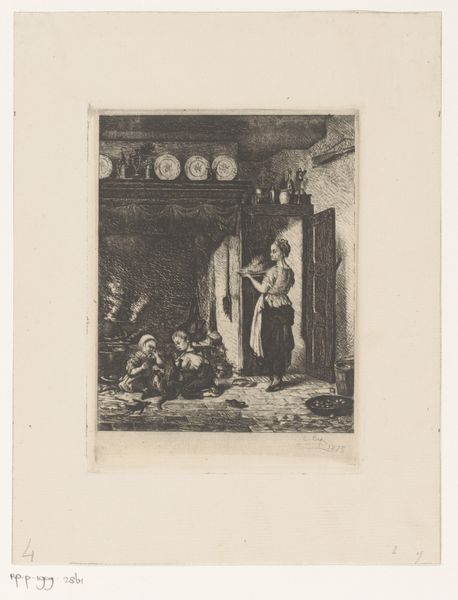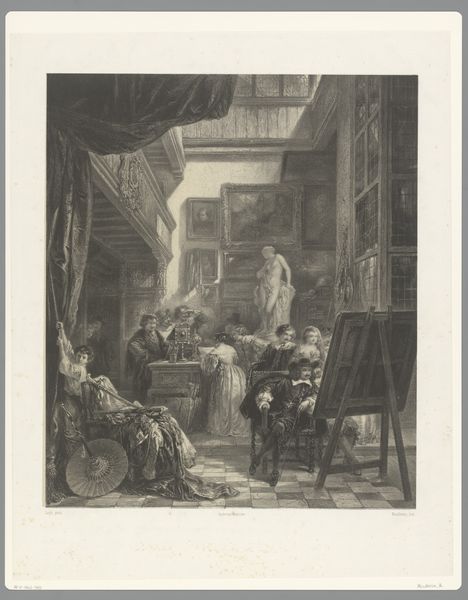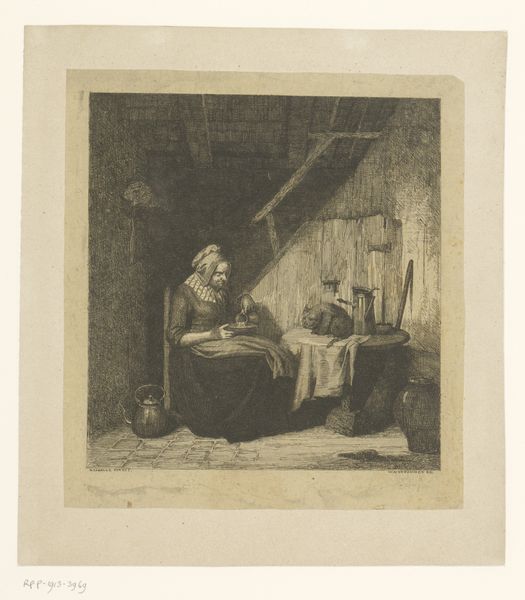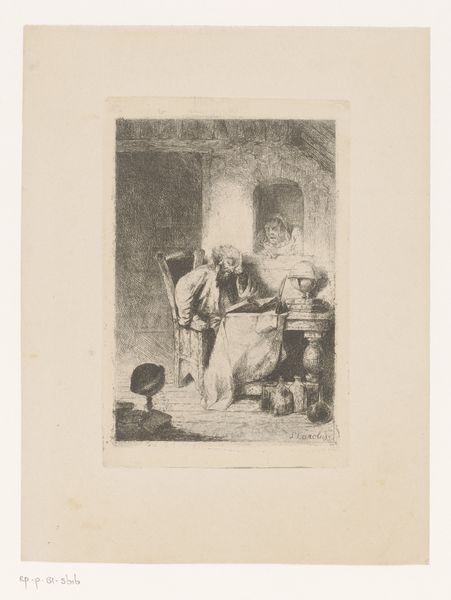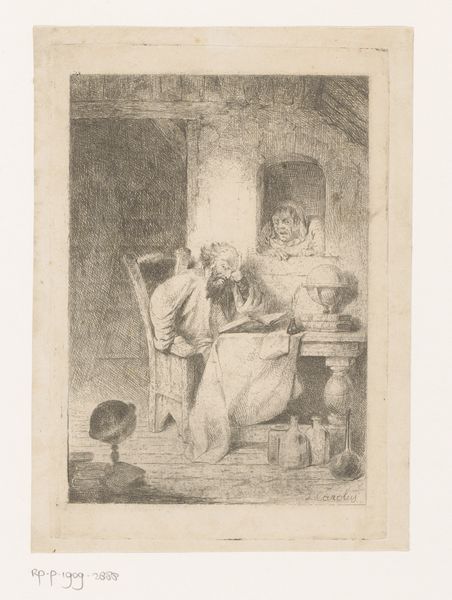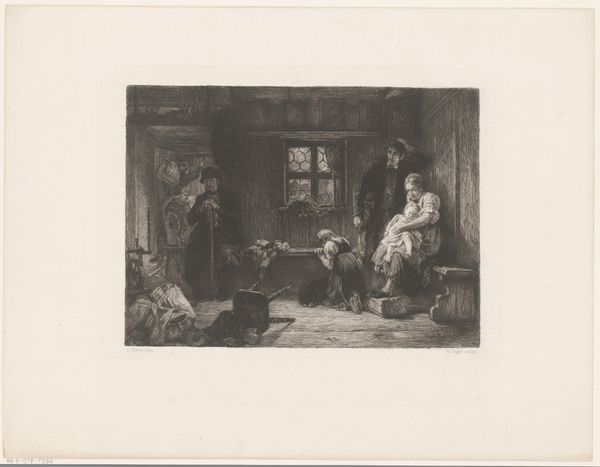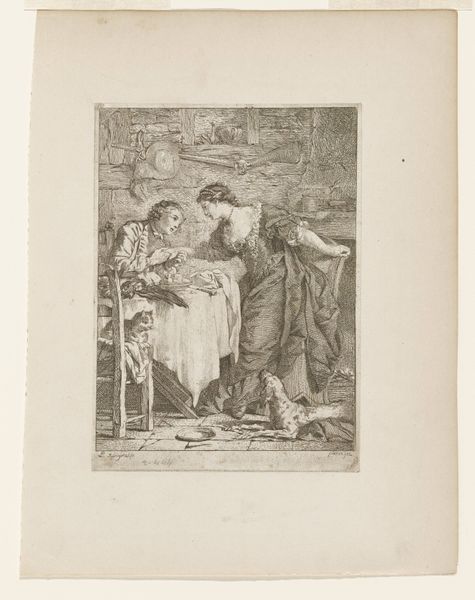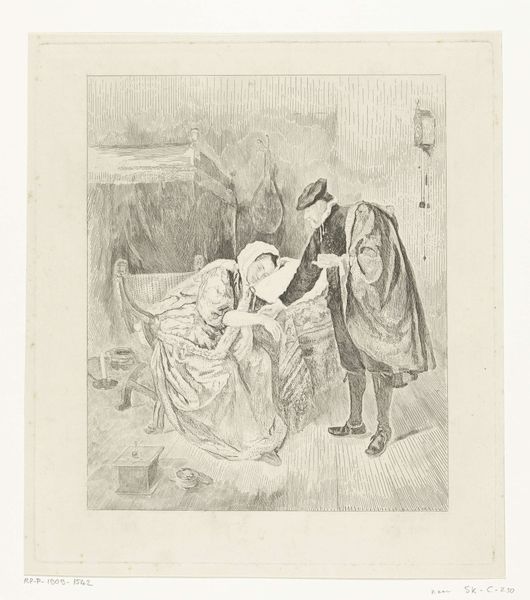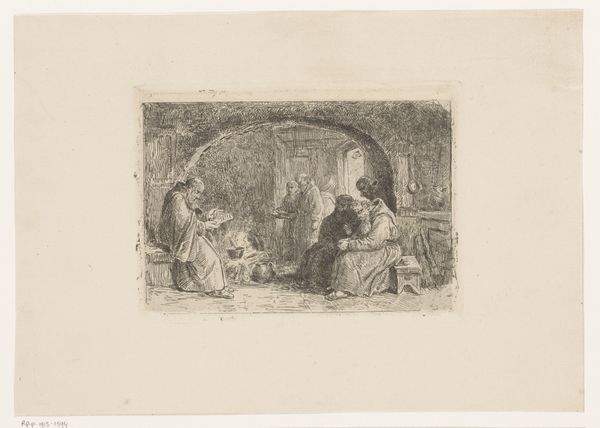
Man assisteert een vrouw bij het handwerken terwijl een andere man in de deuropening staat 1825 - 1863
0:00
0:00
guillaumejosephvertommen
Rijksmuseum
print, etching
#
narrative-art
# print
#
etching
#
old engraving style
#
genre-painting
#
history-painting
#
realism
Dimensions: height 131 mm, width 100 mm
Copyright: Rijks Museum: Open Domain
Curator: This etching, created by Guillaume Joseph Vertommen between 1825 and 1863, is titled "Man assisteert een vrouw bij het handwerken terwijl een andere man in de deuropening staat". It's a glimpse into domestic life from that era, currently residing here at the Rijksmuseum. Editor: My first impression? The interplay of light and shadow is captivating! There’s a definite contrast in the darkness surrounding the man with the violin versus the brighter, central space around the woman. Curator: Precisely! The dramatic chiaroscuro speaks to the influence of Dutch Golden Age painting, even though this piece is later. The etching process itself allows for these striking tonal variations, capturing the textures of everyday life for public consumption and education. These genre paintings held immense socio-political currency by teaching proper comportment in life. Editor: Yes, you see how the lines converge? They really draw your eye into the narrative scene within the enclosed space of the home. Vertommen uses those intricate, almost chaotic lines to suggest texture, depth, the tangible details. Curator: This scene speaks to the burgeoning middle class in the 19th century and their aspiration toward sophisticated art production and social behavior. Notice how Vertommen uses genre painting styles to normalize cultural and domestic values of class. Editor: But doesn’t that density almost suffocate the scene? Especially compared to the airy lightness near the man in the doorway; it emphasizes a visual and perhaps narrative tension. Curator: A good point. Consider, though, that the placement of these figures, and the way this family and work are portrayed, really reveals an idealized view of domestic harmony meant to promote stability in a society undergoing massive change through industrialization. These visual techniques really give viewers cues about how they ought to view modern domesticity. Editor: The way you place it within the social and cultural climate certainly adds another dimension to seeing it as more than just aesthetic lines. I appreciate the additional context. Curator: And I, your insight into its compositional strategy and the emotional narrative it subtly creates. It underscores the importance of how both history and artistic interpretation come together when we analyze a work like this.
Comments
No comments
Be the first to comment and join the conversation on the ultimate creative platform.
